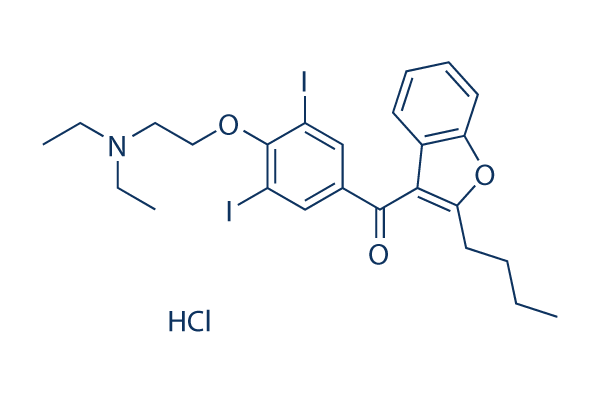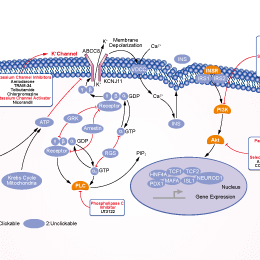
- Bioactive Compounds
- By Signaling Pathways
- PI3K/Akt/mTOR
- Epigenetics
- Methylation
- Immunology & Inflammation
- Protein Tyrosine Kinase
- Angiogenesis
- Apoptosis
- Autophagy
- ER stress & UPR
- JAK/STAT
- MAPK
- Cytoskeletal Signaling
- Cell Cycle
- TGF-beta/Smad
- DNA Damage/DNA Repair
- Compound Libraries
- Popular Compound Libraries
- Customize Library
- Clinical and FDA-approved Related
- Bioactive Compound Libraries
- Inhibitor Related
- Natural Product Related
- Metabolism Related
- Cell Death Related
- By Signaling Pathway
- By Disease
- Anti-infection and Antiviral Related
- Neuronal and Immunology Related
- Fragment and Covalent Related
- FDA-approved Drug Library
- FDA-approved & Passed Phase I Drug Library
- Preclinical/Clinical Compound Library
- Bioactive Compound Library-I
- Bioactive Compound Library-Ⅱ
- Kinase Inhibitor Library
- Express-Pick Library
- Natural Product Library
- Human Endogenous Metabolite Compound Library
- Alkaloid Compound LibraryNew
- Angiogenesis Related compound Library
- Anti-Aging Compound Library
- Anti-alzheimer Disease Compound Library
- Antibiotics compound Library
- Anti-cancer Compound Library
- Anti-cancer Compound Library-Ⅱ
- Anti-cancer Metabolism Compound Library
- Anti-Cardiovascular Disease Compound Library
- Anti-diabetic Compound Library
- Anti-infection Compound Library
- Antioxidant Compound Library
- Anti-parasitic Compound Library
- Antiviral Compound Library
- Apoptosis Compound Library
- Autophagy Compound Library
- Calcium Channel Blocker LibraryNew
- Cambridge Cancer Compound Library
- Carbohydrate Metabolism Compound LibraryNew
- Cell Cycle compound library
- CNS-Penetrant Compound Library
- Covalent Inhibitor Library
- Cytokine Inhibitor LibraryNew
- Cytoskeletal Signaling Pathway Compound Library
- DNA Damage/DNA Repair compound Library
- Drug-like Compound Library
- Endoplasmic Reticulum Stress Compound Library
- Epigenetics Compound Library
- Exosome Secretion Related Compound LibraryNew
- FDA-approved Anticancer Drug LibraryNew
- Ferroptosis Compound Library
- Flavonoid Compound Library
- Fragment Library
- Glutamine Metabolism Compound Library
- Glycolysis Compound Library
- GPCR Compound Library
- Gut Microbial Metabolite Library
- HIF-1 Signaling Pathway Compound Library
- Highly Selective Inhibitor Library
- Histone modification compound library
- HTS Library for Drug Discovery
- Human Hormone Related Compound LibraryNew
- Human Transcription Factor Compound LibraryNew
- Immunology/Inflammation Compound Library
- Inhibitor Library
- Ion Channel Ligand Library
- JAK/STAT compound library
- Lipid Metabolism Compound LibraryNew
- Macrocyclic Compound Library
- MAPK Inhibitor Library
- Medicine Food Homology Compound Library
- Metabolism Compound Library
- Methylation Compound Library
- Mouse Metabolite Compound LibraryNew
- Natural Organic Compound Library
- Neuronal Signaling Compound Library
- NF-κB Signaling Compound Library
- Nucleoside Analogue Library
- Obesity Compound Library
- Oxidative Stress Compound LibraryNew
- Plant Extract Library
- Phenotypic Screening Library
- PI3K/Akt Inhibitor Library
- Protease Inhibitor Library
- Protein-protein Interaction Inhibitor Library
- Pyroptosis Compound Library
- Small Molecule Immuno-Oncology Compound Library
- Mitochondria-Targeted Compound LibraryNew
- Stem Cell Differentiation Compound LibraryNew
- Stem Cell Signaling Compound Library
- Natural Phenol Compound LibraryNew
- Natural Terpenoid Compound LibraryNew
- TGF-beta/Smad compound library
- Traditional Chinese Medicine Library
- Tyrosine Kinase Inhibitor Library
- Ubiquitination Compound Library
-
Cherry Picking
You can personalize your library with chemicals from within Selleck's inventory. Build the right library for your research endeavors by choosing from compounds in all of our available libraries.
Please contact us at [email protected] to customize your library.
You could select:
- Antibodies
- Bioreagents
- qPCR
- 2x SYBR Green qPCR Master Mix
- 2x SYBR Green qPCR Master Mix(Low ROX)
- 2x SYBR Green qPCR Master Mix(High ROX)
- Protein Assay
- Protein A/G Magnetic Beads for IP
- Anti-Flag magnetic beads
- Anti-Flag Affinity Gel
- Anti-Myc magnetic beads
- Anti-HA magnetic beads
- Magnetic Separator
- Poly DYKDDDDK Tag Peptide lyophilized powder
- Protease Inhibitor Cocktail
- Protease Inhibitor Cocktail (EDTA-Free, 100X in DMSO)
- Phosphatase Inhibitor Cocktail (2 Tubes, 100X)
- Cell Biology
- Cell Counting Kit-8 (CCK-8)
- Animal Experiment
- Mouse Direct PCR Kit (For Genotyping)
- New Products
- Contact Us
Amiodarone HCl
Synonyms: NSC 85442
Amiodarone HCl is a sodium/potassium-ATPase inhibitor and an autophagy activator, used to treat various types of cardiac dysrhythmias.

Amiodarone HCl Chemical Structure
CAS No. 19774-82-4
Purity & Quality Control
Batch:
Purity:
99.98%
99.98
Amiodarone HCl Related Products
| Related Targets | Ca2+-dependent K+ channel | Click to Expand |
|---|---|---|
| Related Products | Nicorandil TRAM-34 Sophocarpine ML133 HCl Hydralazine HCl Gliquidone PAP-1 | Click to Expand |
| Related Compound Libraries | FDA-approved Drug Library Natural Product Library Ion Channel Ligand Library Exosome Secretion Related Compound Library Calcium Channel Blocker Library | Click to Expand |
Signaling Pathway
Biological Activity
| Description | Amiodarone HCl is a sodium/potassium-ATPase inhibitor and an autophagy activator, used to treat various types of cardiac dysrhythmias. | |
|---|---|---|
| Targets |
|
| In vitro | ||||
| In vitro | Amiodarone possesses an inhibitory effect on the fast sodium channel as well as on the slow calcium channel. Amiodarone also has non-competitive antisympathetic effects, and modulates thyroid function and phospholipid metabolism. Amiodarone penetrates deeply into the lipid matrix of the membrane, and is released from cardiac tissues very slowly when washed out. Amiodarone (44–88 μM) depresses Vmax of guinea pig papillary muscle without affecting the resting membrane potential, and that this Vmax inhibition is enhanced in a frequency- or use-dependent manner like Class I antiarrhythmic drugs. Amiodarone (50–88 μM) is also found to suppress the depolarization-induced spontaneous action potentials (abnormal automaticity) in ventricular muscles and in Purkinje fibers. [1] |
|||
|---|---|---|---|---|
| In Vivo | ||
| In vivo | Amiodarone (1.25–25 mg/kg) results in a decrease in sinus rate, a prolongation of effective and functional refractory periods of the atrioventricular node, and a frequency-dependent conduction delay in the atrioventricular node and in the ventricle of anesthetized dogs. Amiodarone (50 mg/kg/day, i.p. for 3–4 weeks) results in significant decreases in the current density of iK and ito in ventricular cells without affecting iCa and iK1 densities in rabbit. Amiodarone (AM) inhibits intracellular conversion from thyroxine (T4) to triiodothyronine (T3) via 5′-deiodination (5′DI) without affecting intracellular conversion from T4 to reverse T3 (rT3). [1] |
|
|---|---|---|
| NCT Number | Recruitment | Conditions | Sponsor/Collaborators | Start Date | Phases |
|---|---|---|---|---|---|
| NCT06067438 | Not yet recruiting | Atrial Fibrillation|Esophageal Carcinoma |
OHSU Knight Cancer Institute |
May 1 2024 | Phase 2 |
| NCT05841056 | Not yet recruiting | Atrial Fibrillation New Onset |
Population Health Research Institute |
May 31 2024 | Phase 3 |
| NCT05852704 | Recruiting | Chronic Coronary Syndrome|Atrial Fibrillation |
Region Örebro County|Odense University Hospital|Aarhus University Hospital|Örebro University Sweden|Sahlgrenska University Hospital Sweden|Göteborg University|University of Leeds|Skane University Hospital|London School of Hygiene and Tropical Medicine|St. Anne''s University Hospital Brno Czech Republic|Mount Sinai Hospital New York|University Hospital Linkoeping|Icahn School of Medicine at Mount Sinai |
April 4 2024 | Phase 3 |
| NCT05543278 | Not yet recruiting | Surgery Cardiac|Atrial Fibrillation |
Massachusetts General Hospital |
February 1 2024 | Phase 4 |
Chemical Information & Solubility
| Molecular Weight | 681.77 | Formula | C25H29I2NO3.HCl |
| CAS No. | 19774-82-4 | SDF | Download Amiodarone HCl SDF |
| Smiles | CCCCC1=C(C2=CC=CC=C2O1)C(=O)C3=CC(=C(C(=C3)I)OCCN(CC)CC)I.Cl | ||
| Storage (From the date of receipt) | |||
|
In vitro |
DMSO : 100 mg/mL ( (146.67 mM) Moisture-absorbing DMSO reduces solubility. Please use fresh DMSO.) Ethanol : 20 mg/mL Water : Insoluble |
Molecular Weight Calculator |
|
In vivo Add solvents to the product individually and in order. |
In vivo Formulation Calculator |
||||
Preparing Stock Solutions
Molarity Calculator
In vivo Formulation Calculator (Clear solution)
Step 1: Enter information below (Recommended: An additional animal making an allowance for loss during the experiment)
mg/kg
g
μL
Step 2: Enter the in vivo formulation (This is only the calculator, not formulation. Please contact us first if there is no in vivo formulation at the solubility Section.)
% DMSO
%
% Tween 80
% ddH2O
%DMSO
%
Calculation results:
Working concentration: mg/ml;
Method for preparing DMSO master liquid: mg drug pre-dissolved in μL DMSO ( Master liquid concentration mg/mL, Please contact us first if the concentration exceeds the DMSO solubility of the batch of drug. )
Method for preparing in vivo formulation: Take μL DMSO master liquid, next addμL PEG300, mix and clarify, next addμL Tween 80, mix and clarify, next add μL ddH2O, mix and clarify.
Method for preparing in vivo formulation: Take μL DMSO master liquid, next add μL Corn oil, mix and clarify.
Note: 1. Please make sure the liquid is clear before adding the next solvent.
2. Be sure to add the solvent(s) in order. You must ensure that the solution obtained, in the previous addition, is a clear solution before proceeding to add the next solvent. Physical methods such
as vortex, ultrasound or hot water bath can be used to aid dissolving.
Tech Support
Answers to questions you may have can be found in the inhibitor handling instructions. Topics include how to prepare stock solutions, how to store inhibitors, and issues that need special attention for cell-based assays and animal experiments.
Tel: +1-832-582-8158 Ext:3
If you have any other enquiries, please leave a message.
* Indicates a Required Field
Tags: buy Amiodarone HCl | Amiodarone HCl supplier | purchase Amiodarone HCl | Amiodarone HCl cost | Amiodarone HCl manufacturer | order Amiodarone HCl | Amiodarone HCl distributor







































